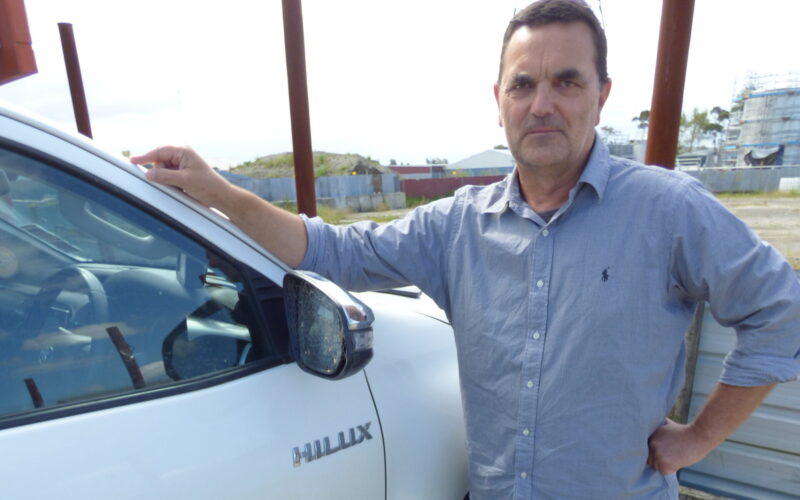A Gisborne forest manager is hoping a draft plan on forest management practices will ensure slash and waste issues in waterways become a thing of the past for the industry as it re-plants the next generation of forests.
Dan Fraser, Gisborne regional manager for Forest Enterprises, said today’s forest managers are caught trying to manage legacy forests that were planted post-Bola and not always in the best manner.
Meantime those forests are rapidly reaching maturity, demanding to be harvested.
“That forestry went on the hardest land [after 1988’s Cyclone Bola], and what people often still don’t get their heads around is the risk of managing timber on such landslide-prone country.”
A key focus for Fraser has been to champion a forest management practices plan for foresters operating in such catchments, one he hopes all forestry companies operating in Gisborne will sign up to.
He admits that, with its smaller size, Forest Enterprises is more capable than most of making rapid changes to its practices, and that it also inherited some of the better land, which had waterways planted by farmers in poplars and willows prior to forestry conversion in late 1980s-early ’90s.
“You get the migration of wood debris down a hillside, but it stops. But not from mānuka, it will tear the mānuka out, mānuka only adds to the fuel,” Fraser said.
“We have been assessing the risk, and been replanting those poplars along waterways, which would not be normal practice.
“We would typically plant those trees ahead of the plantation, and that is our strategy for the next generation of forest.”
Perhaps surprisingly there is little work done in New Zealand on fragile land and forestry harvesting techniques, with Fraser working with a colleague at the University of Canterbury School of Forestry on plan details.
“There is best practice for building roads, best practice for building landings, but there is nothing on catchment management on landslide prone slopes,” he said.
The plan contains six “good practice” sections to mitigate impact on landslide-prone country.
These include better evaluation of slope, limiting the clear-cutting area, minimising slash volumes, and leaving mature trees to help trap slash, or constructing artificial slash traps.
For future forest plantings, there is also a requirement for closer evaluation of land’s suitability for re-planting.
He said in some vulnerable forests trees are already falling over before harvest even commences, unable to be held in place by the fragile soils on steep slope profiles.
“We have been doing risk assessment, saying ‘Look, this forest is too high a risk to even harvest this.’”
Using LiDAR technology, slopes can be identified in more detail to fine-tune forest harvesting, what to take out, and what to leave.
Forest Enterprises already has some of the steps in place, including poplar plantings, and claims no migration from any forests since 2017.
“We are also not going to do massive big clear falls in one catchment in one area. We have gone back to our investors and said ‘You are not going to get your cheque in one year, we are going to spread the risk in this catchment.’”
Risk mitigation could mean payments are spread out over as much as six to eight years.
Phillip Hope, head of Eastland Wood Council (EWC), said the practice guideline for catchment management brings together current best practice and science, aiming to provide a ready guide for foresters.
It is not compulsory, and nor is EWC membership.
“We are actively meeting with interested parties to talk about options that have a proven impact on issues such as woody debris and look forward to continuing to do so in coming months,” Hope said.
“But for now, our focus is on the clean-up after the recent ex-tropical cyclone Hale. We have committed thousands of hours, and hundreds of thousands of dollars dealing with its impacts on neighbouring properties and beaches.
“While we know the scale of this clean-up will take some time, we are committed to doing what it takes to help solve this problem for our community.”






